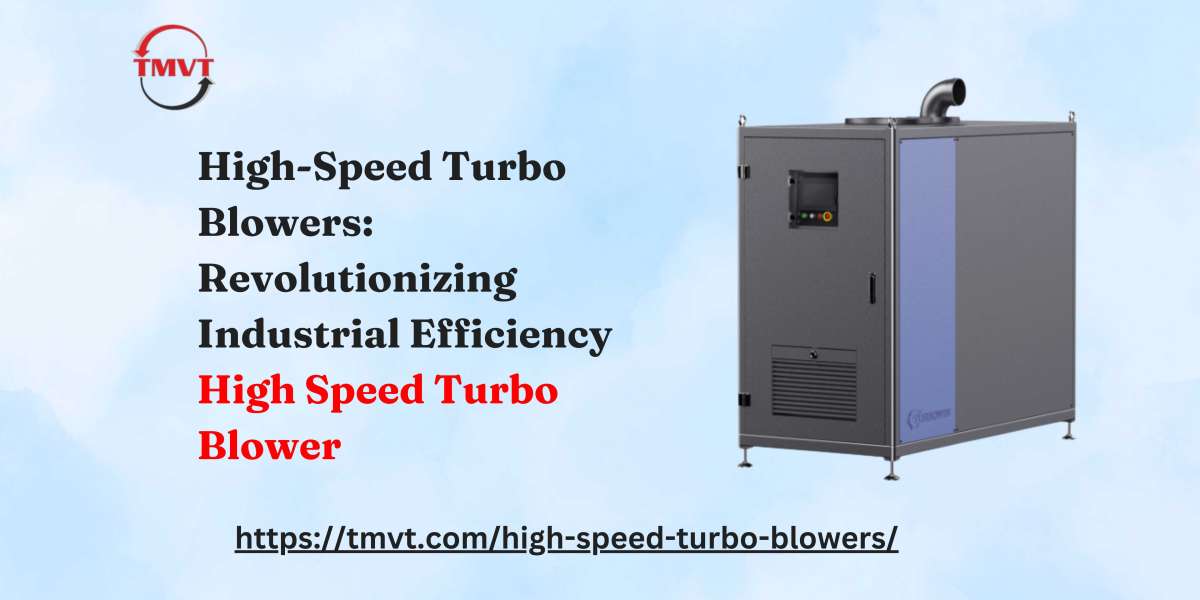In today's fast-paced industrial landscape, efficiency and reliability are paramount. Enter the High-Speed Turbo Blower, a groundbreaking innovation designed to meet the rigorous demands of modern industries. With capacities ranging from 300 M³/Hr to 38,400 M³/Hr and pressures up to 1.2 Kg/cm², these blowers are engineered to deliver unparalleled performance without the need for extra lifting devices, special foundations, or time-consuming alignment procedures.
Understanding High-Speed Turbo Blowers
High-speed turbo blowers are advanced machines that utilize cutting-edge technology to provide efficient and reliable air delivery systems. Unlike traditional blowers, they operate without transmission losses, lubrication, or oil seals, thanks to their direct-drive mechanism. This design not only simplifies maintenance but also enhances overall efficiency.
Key Features and Advantages
- Direct Drive Mechanism: Eliminates transmission losses, ensuring maximum energy efficiency.
- Permanent Magnet Synchronous Motor: Requires power solely to rotate the shaft, not for magnetizing the rotor, leading to significant energy savings.
- Non-Contact Air Foil Bearings: Result in extremely low vibration and noise, with no need for oil lubrication, thereby reducing maintenance requirements.
- User-Friendly Interface: Equipped with a touch LCD monitor displaying real-time data on pressure, temperature, air flow, motor RPM, and power consumption.
Applications Across Industries
High-speed turbo blowers have a wide range of applications, including:
- Wastewater Treatment: Utilized for aeration, agitation, and back-washing processes, enhancing treatment efficiency.
- Power Generation: Employed in dehumidification, drying, coal gasification, and flue gas desulphurization, contributing to cleaner energy production.
- Material Handling: Assist in blending and conveying powdered materials such as cement and pellets by feeding compressed air into transfer lines.
Energy Efficiency and Environmental Impact
One of the standout benefits of high-speed turbo blowers is their energy efficiency. By reducing energy consumption by up to 45%, they not only lower operational costs but also contribute to a reduced carbon footprint. This efficiency is achieved through the integration of advanced components like the permanent magnet synchronous motor and non-contact air foil bearings.
Conclusion
High-speed turbo blowers represent a significant advancement in industrial air delivery systems. Their innovative design, energy efficiency, and versatility make them an invaluable asset across various industries. By choosing high-speed turbo blowers, businesses can achieve enhanced performance, reduced operational costs, and a positive environmental impact.
FAQs
- What makes high-speed turbo blowers more efficient than traditional blowers?
High-speed turbo blowers utilize direct-drive mechanisms and permanent magnet synchronous motors, eliminating transmission losses and reducing energy consumption. - Are high-speed turbo blowers suitable for all industrial applications?
While they are versatile and applicable in many industries, it's essential to assess specific operational requirements to determine suitability. - How do non-contact air foil bearings benefit blower performance?
They result in low vibration and noise levels and eliminate the need for oil lubrication, reducing maintenance needs. - Can high-speed turbo blowers help in reducing operational costs?
Yes, their energy-efficient design can lead to significant savings in energy costs over time. - What maintenance is required for high-speed turbo blowers?
Due to their advanced design, they require minimal maintenance, primarily regular monitoring of system parameters via the built-in interface.











